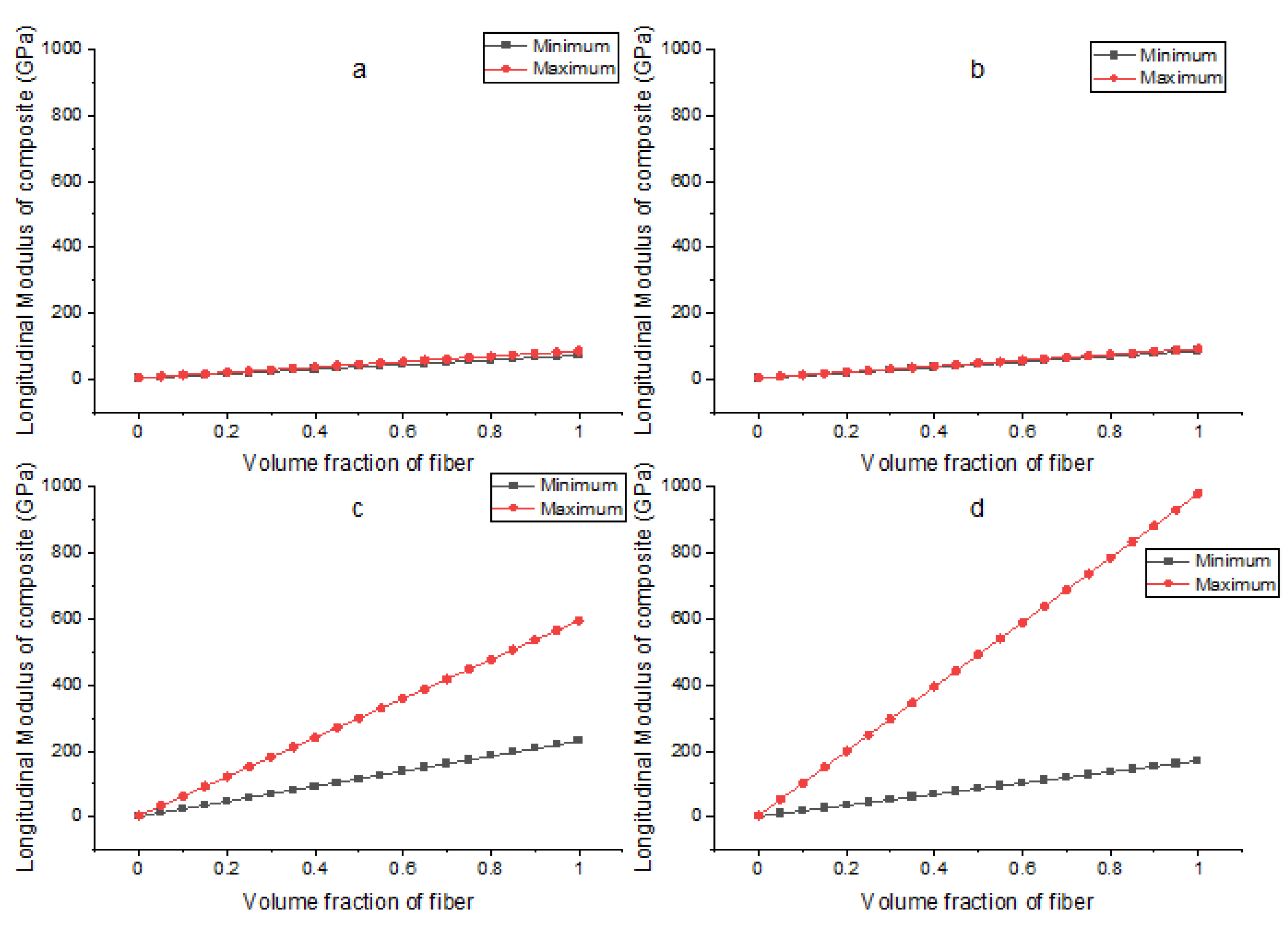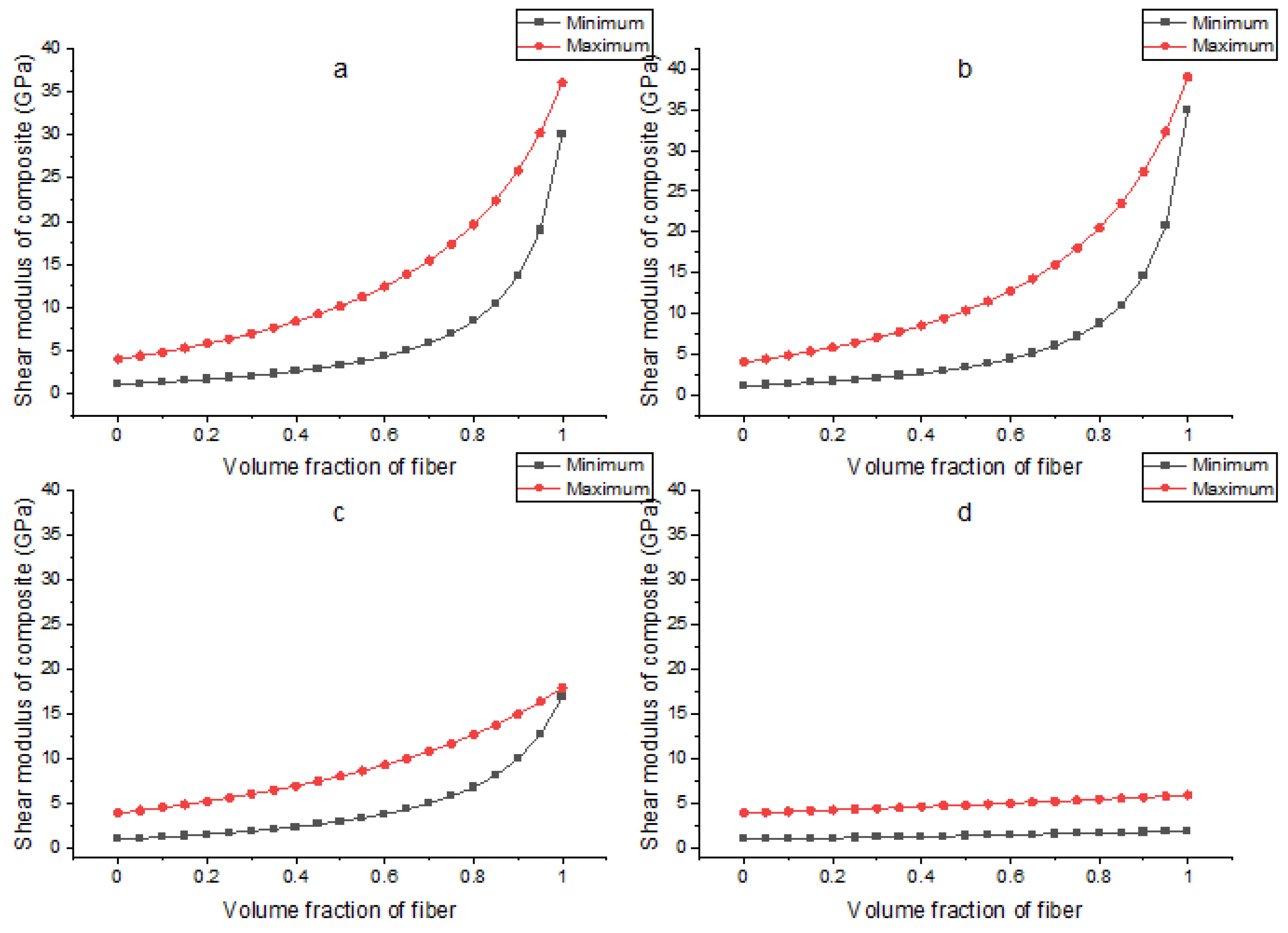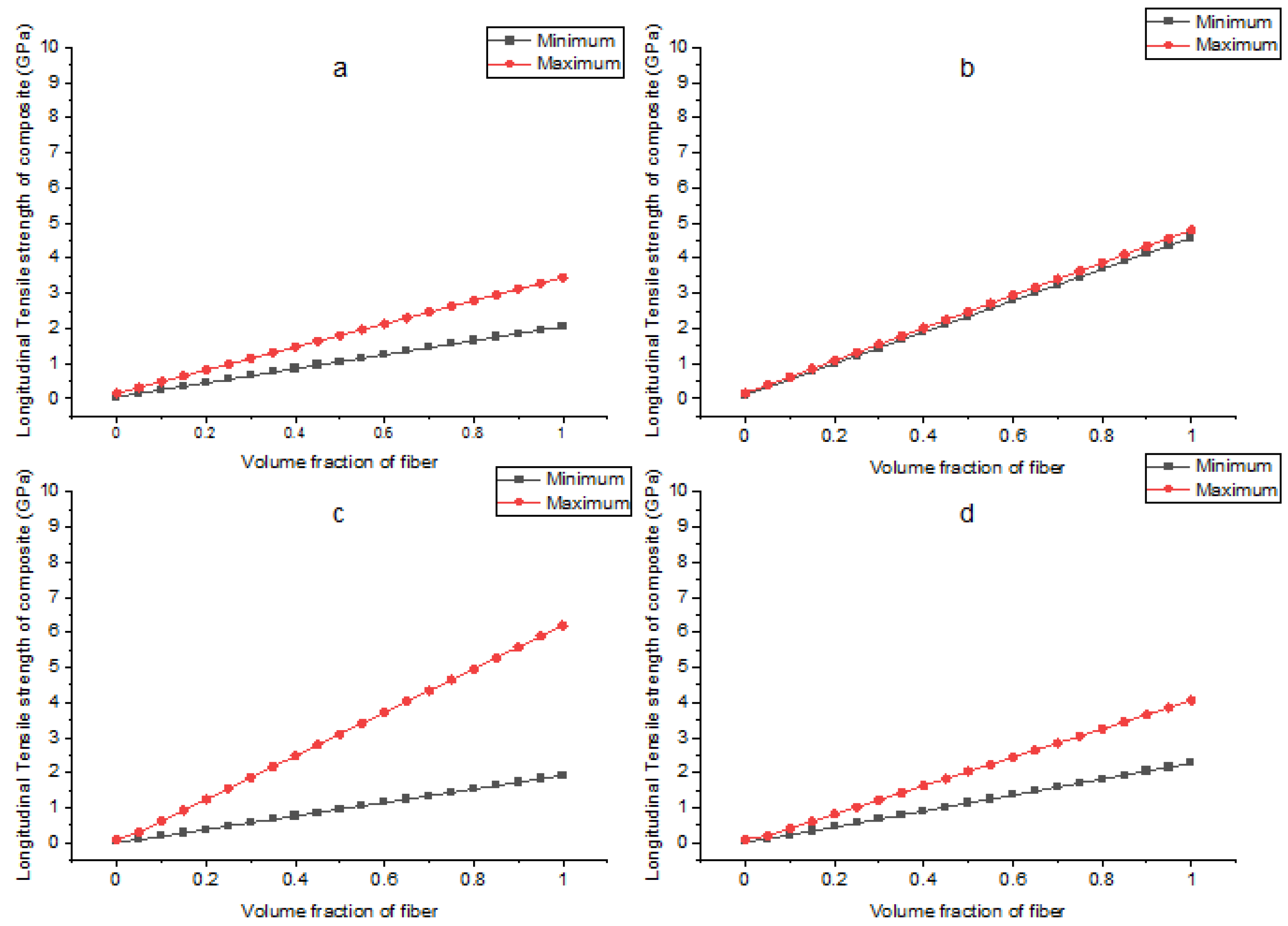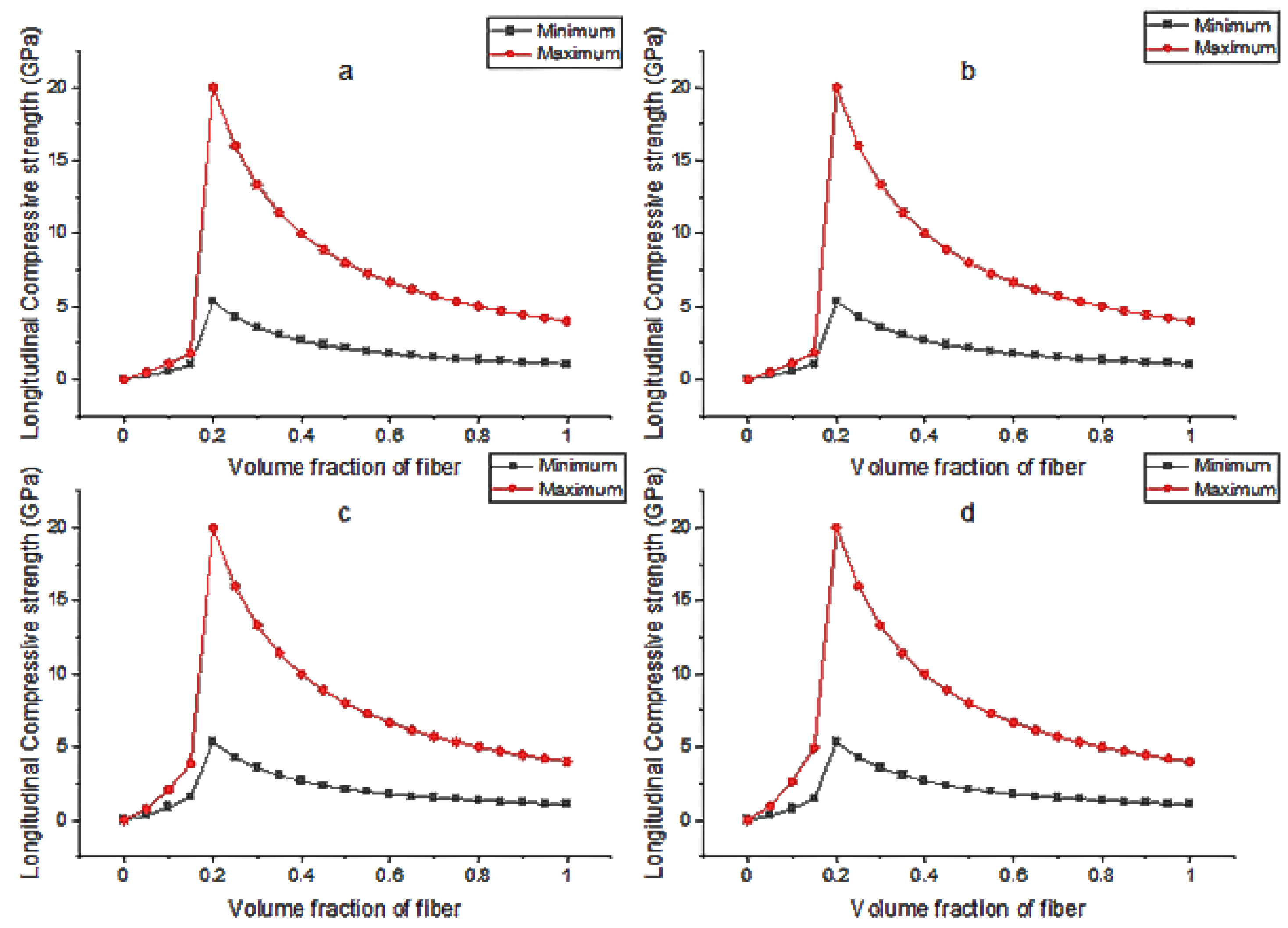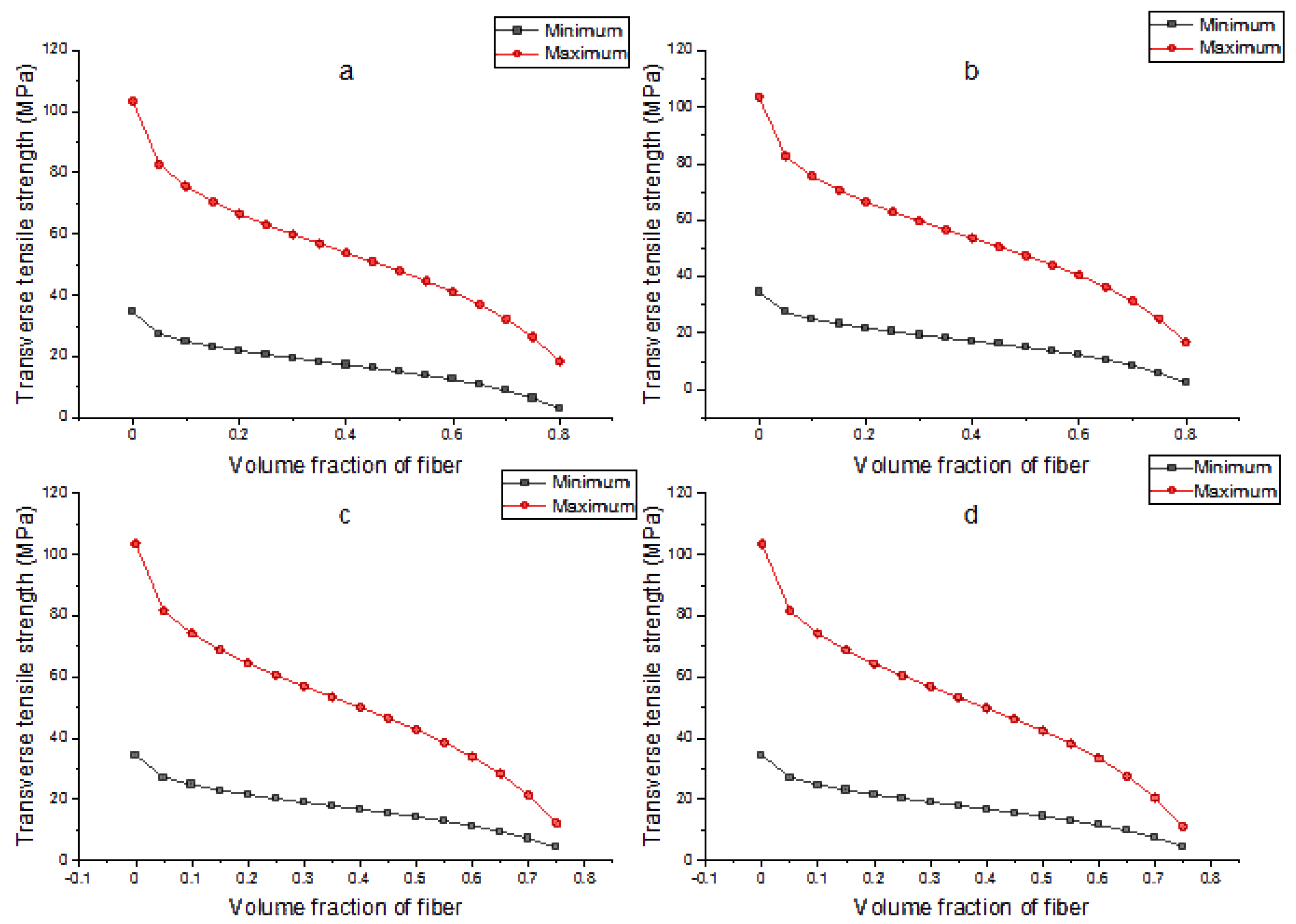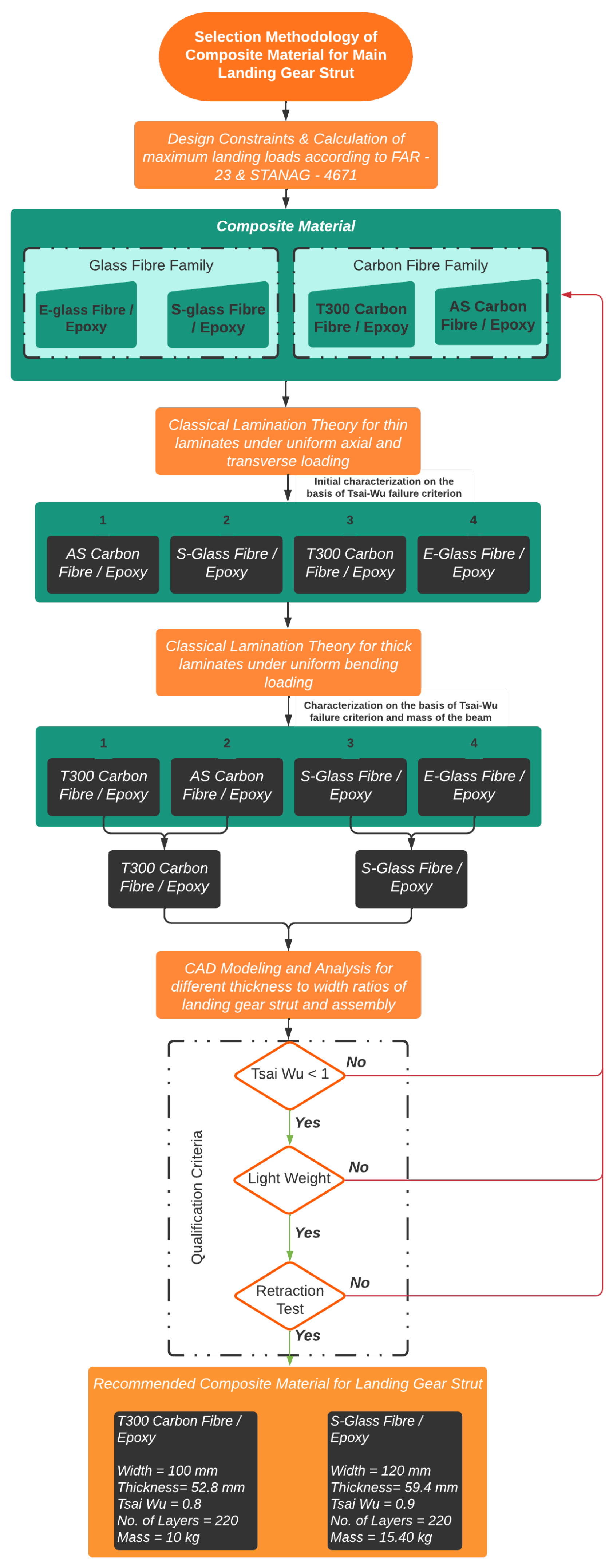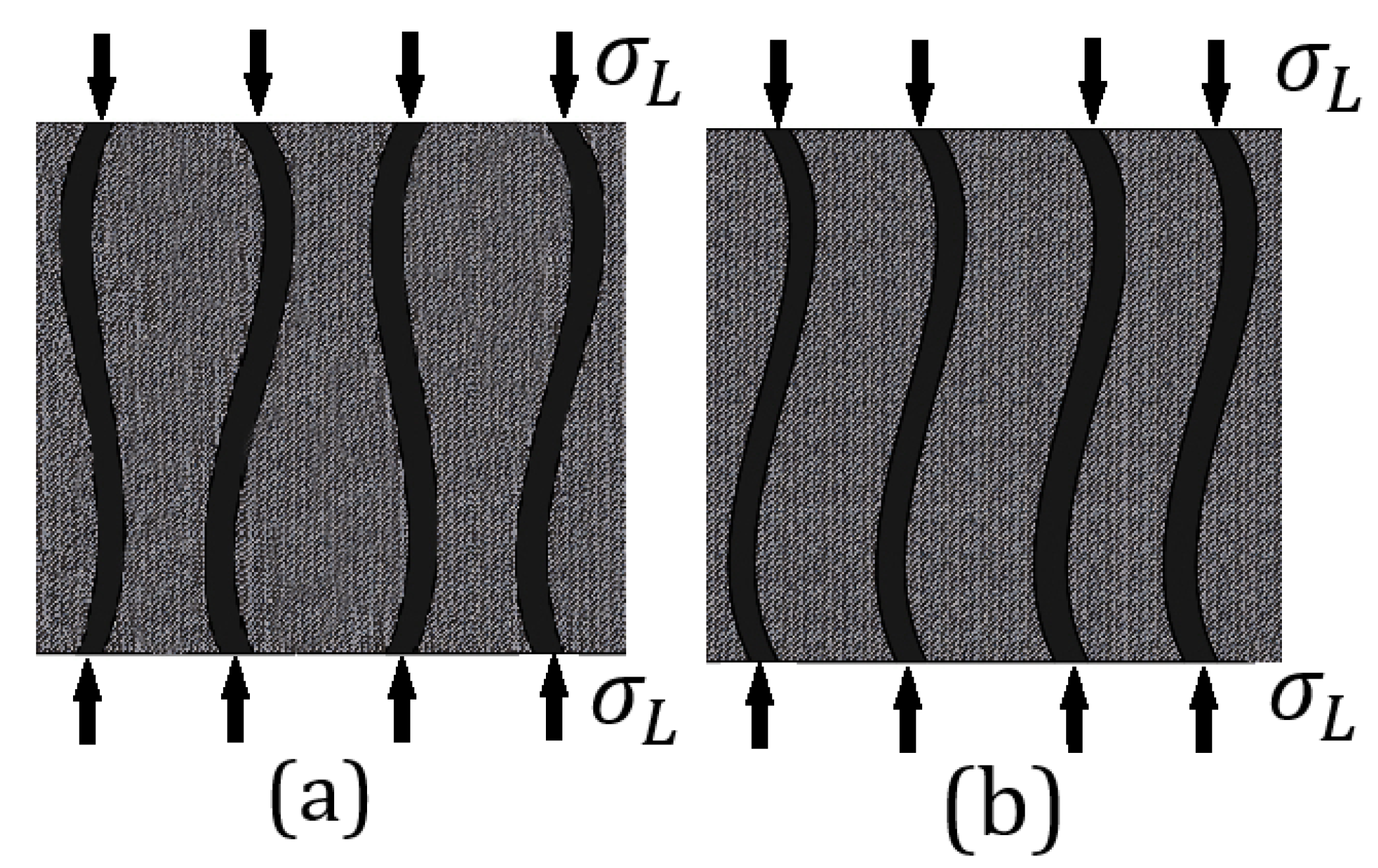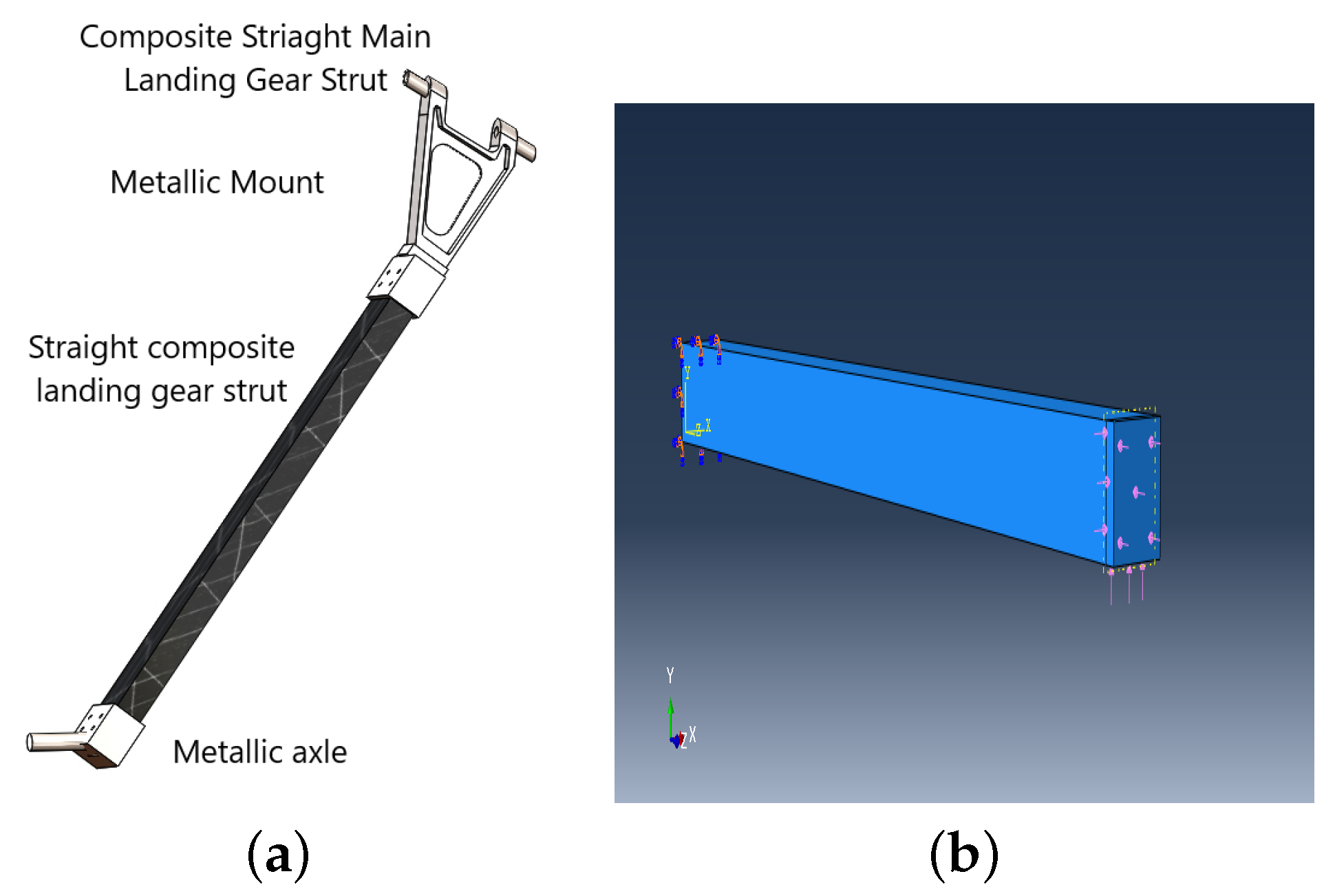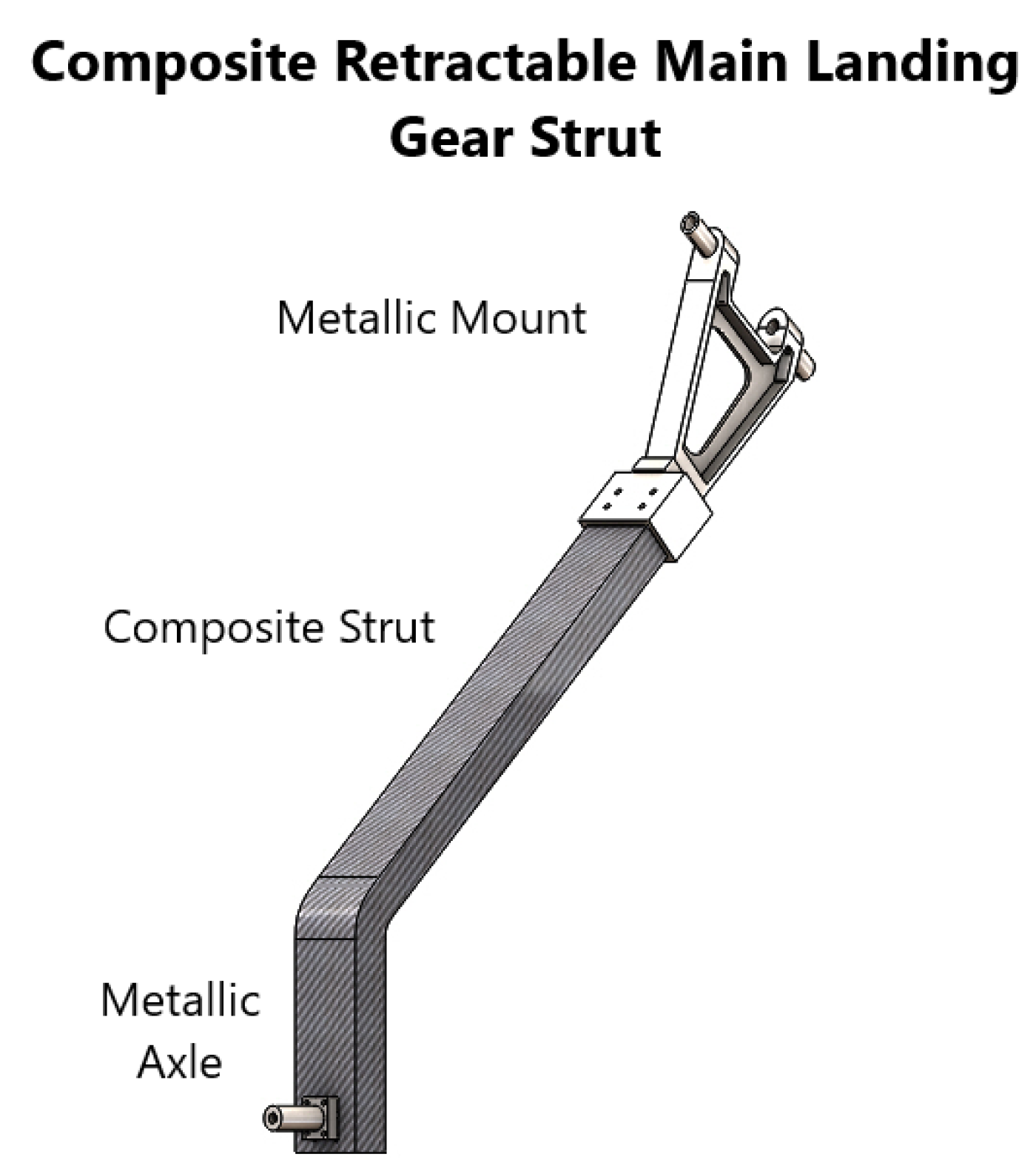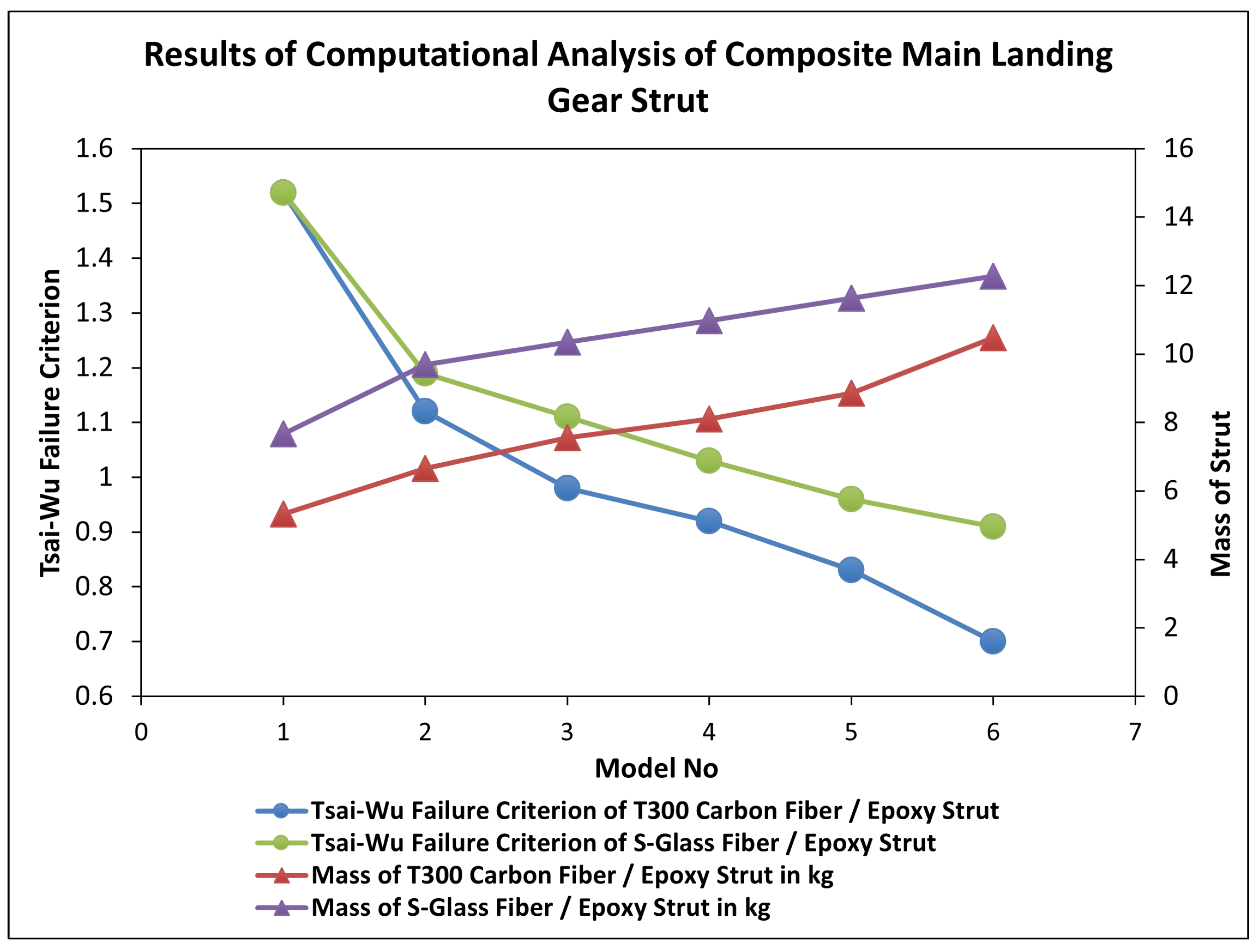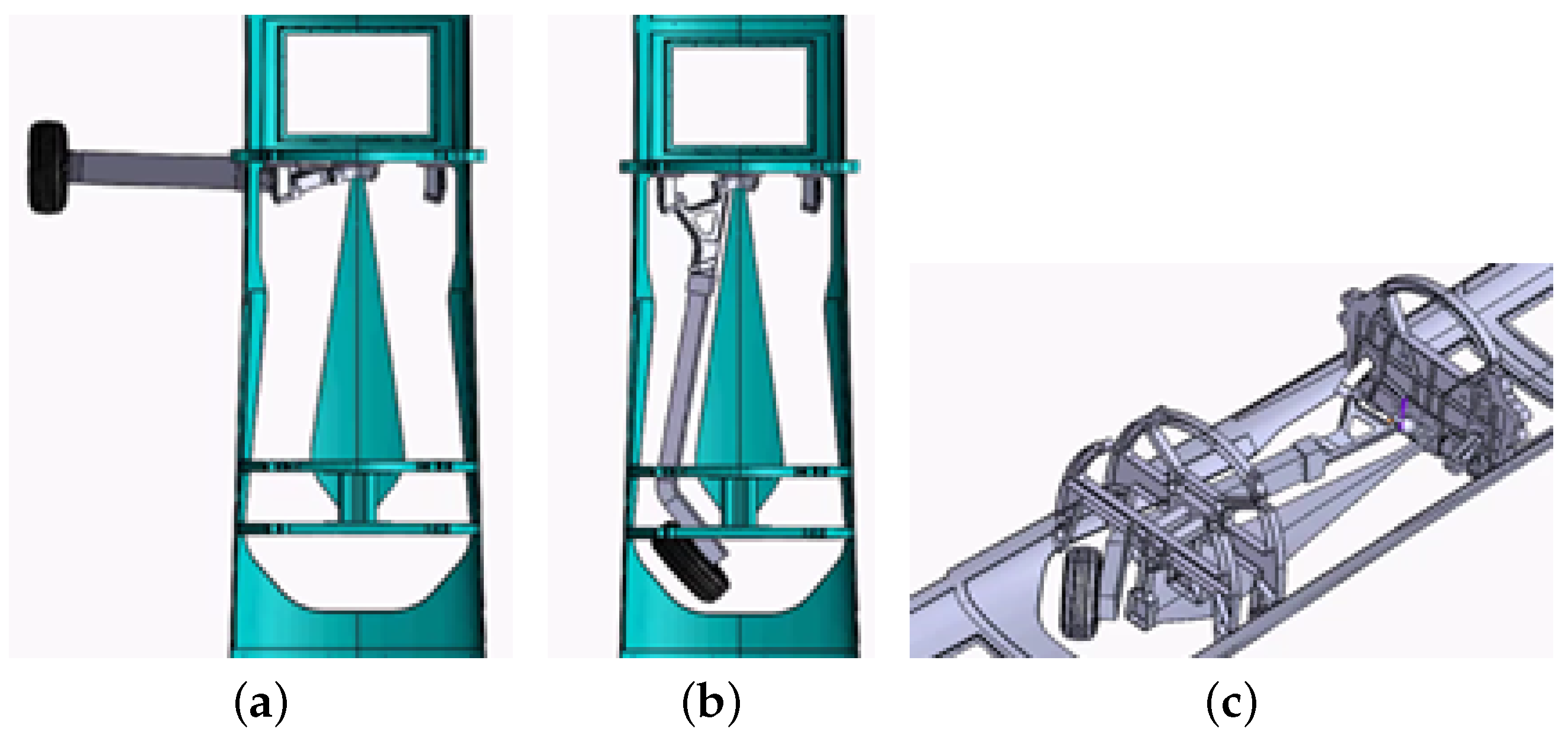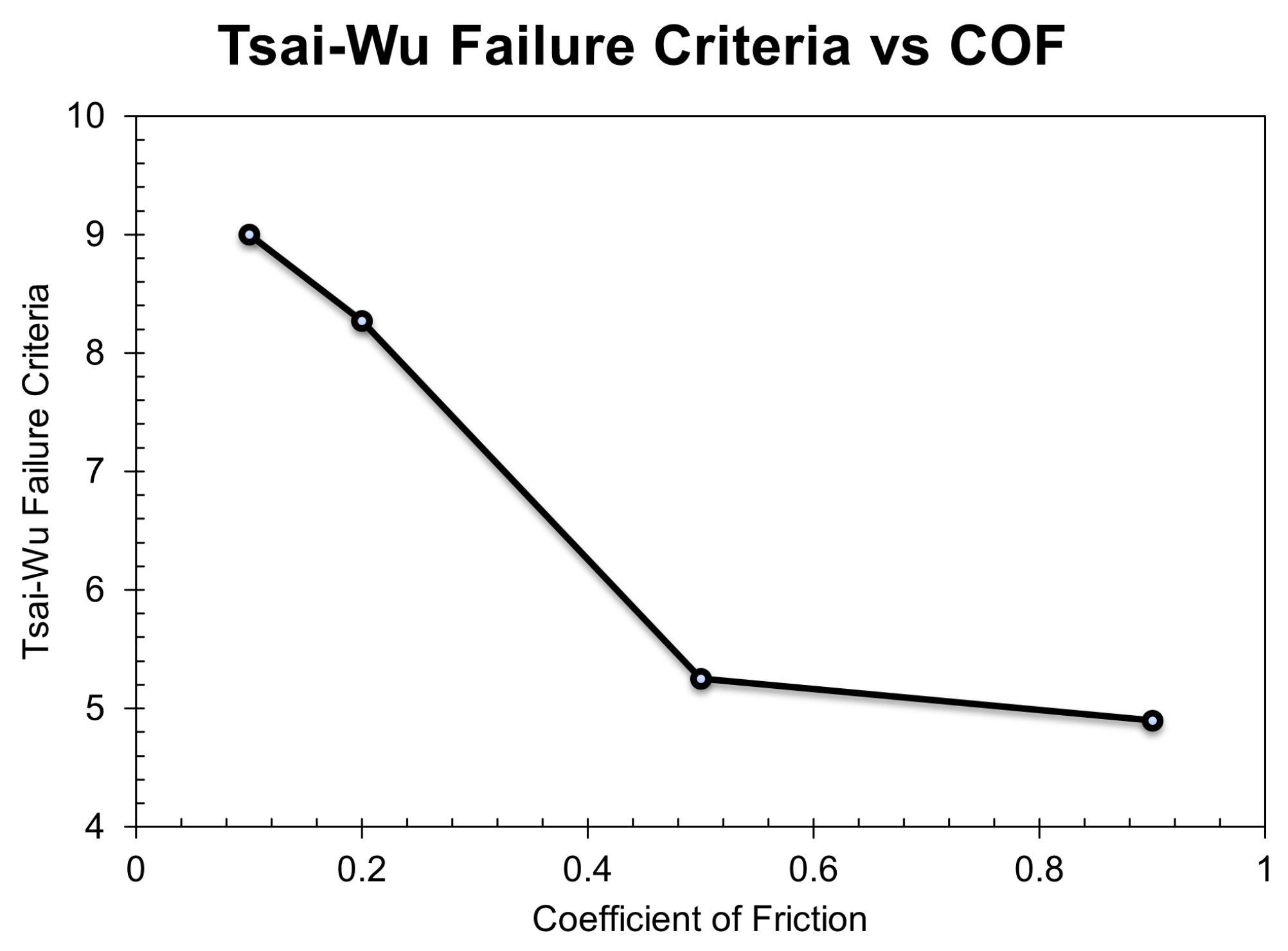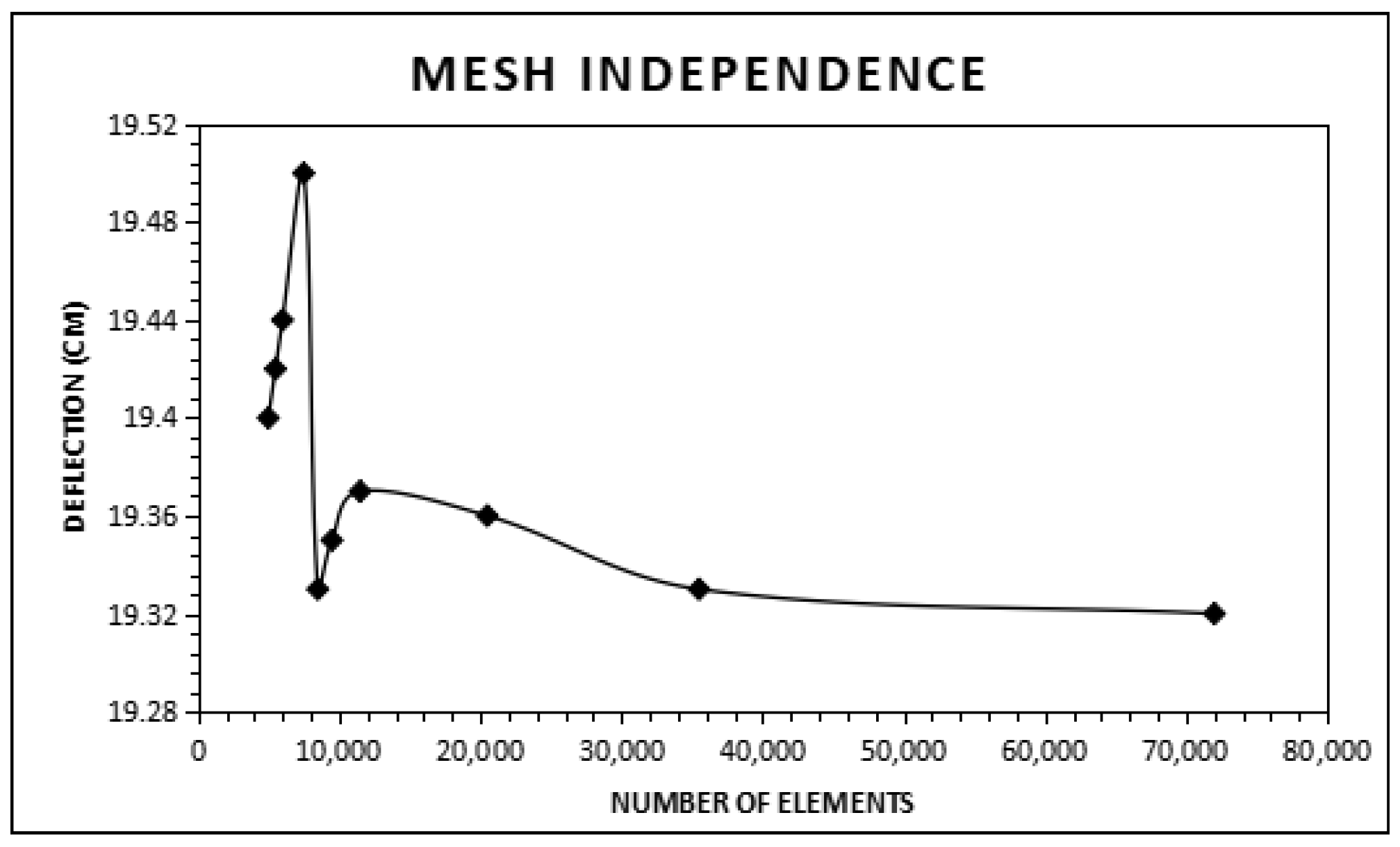1. Introduction
The landing gear system is considered to be one of the most significant systems of an aircraft. An aircraft experiences the highest structural loads at the time of landing and thus the design of the landing gear system is crucial. There are various configurations of landing gear systems depending on the design requirements of the aircraft. Designers in the aviation industry are always focused on saving weight in order to improve aircraft performance, pay-load capacity and fuel efficiency. Developments in the field of fiber-reinforced polymer composite materials have assisted designers in introducing lightweight aircraft components and systems owing to their high strength-to-weight ratio compared to conventional components and systems. Few lightweight aircraft are equipped with fiber-reinforced composite landing gear struts which are generally not retractable and are fixed with the fuselage. However, for long endurance flight requirements of any aircraft, retractable landing gear systems become a primary requirement.
Composite materials are now widely used in almost all industries because of their low weight and high strength. Fiber-reinforced composite materials are one of the responses of the emerging applied sciences and technologies in the industry. Composite materials are designed and developed using two or more constituent materials having different chemical and physical properties. All the constituents of the composite material do not merge or dissolve into each other, rather the individual identity of each constituent material is retained. As a result, different phases are developed in the composite material, comprising continuous and discontinuous or discrete phases. The continuous phase is referred to as the ‘matrix’ and the discontinuous or discrete phase is called the ‘reinforcement’. The reinforcement can comprise long fibers, short fibers or particles. Fiber-reinforced composites in which all the fibers lie in the same direction are called unidirectional (UD) fiber-reinforced composites. A schematic representation of such unidirectional fiber-reinforced composites is shown in
Figure 1. The continuous matrix may be constituted of polymer, ceramic, or metal material. The reinforcement or discontinuous phase is much stronger and stiffer than the continuous phase forming the matrix. The reinforcement is primarily responsible for strengthening the matrix. The key role of the matrix is to hold the reinforcement within the composite and to transfer and distribute the applied load across the discontinuous phase (reinforcement) [
1].
The fibers may be long fibers or short fibers. Fibers are also used in the form of woven fabrics during the manufacture of composite materials. Further advanced types of fiber-reinforced composites are known as hybrid composites in which there are more than two constituent materials. In some advanced designs of composite materials, hollow or solid metal rods are used as reinforcements in addition to the fibers. The type of fiber, its volume ratio and orientation are important in the determination of the mechanical and physical properties of fiber-reinforced composite materials. The proportion of fiber volume in composite materials plays a basic and vital role in the determination of the strength and other mechanical properties of the composite materials.This is why the proportion of fiber volume is one of the key design parameters. In addition, the manufacturing processes also affects the mechanical behavior of composite materials. The orientation of fibers in a composite material is decided according to the desired mechanical properties for the application.
The mechanical properties of the composite materials depend on the distribution, chemical and physical interactions of its fibers and matrix. Experimentation is the simplest and most direct way to determine the mechanical properties of unidirectional fiber-reinforced composites. With the help of experimental measurements, the mechanical properties for a fixed ratio of fibers and matrix with a set of specimens fabricated in a single process can be determined. To determine the mechanical properties of fibrous composites with various fiber-matrix ratios, a wide range of specimens are fabricated in separate batches. For this reason, experimental measurements of the mechanical properties of fibrous materials with different fiber ratios become challenging in terms of time and cost which represent a major limitation. To address this issue, semi-empirical and theoretical methods have been developed to predict the mechanical properties of unidirectional fiber-reinforced composites [
2].
Da and Yvonnet conducted a study to maximize the fracture toughness of particle-matrix composites [
3]. In addition, evolutionary topology optimization and a phase method were combined and applied to the composites to evaluate their fracture toughness. The results of this study showed an increase in fracture toughness. Similar studies [
4,
5] have focused on the enhancement of failure strain and fracture toughness using topology optimization techniques on composite materials. Junker and Hackl [
6] used methods derived from variational material modeling for topology optimization problems.
For an aircraft, the main landing gear takes most of the landing load upon landing which causes it to be a highly stressed area. The landing gear stores versatile energy that is easily convertible into another form upon landing. Therefore, the material used for the manufacture of landing gear struts must be capable of withstanding and absorbing this versatile energy. High mechanical stiffness, a high strength-to-weight ratio and high energy storage and damping capacity are key attributes that the main landing gear should possess [
7].
The leaf spring is the oldest, but still one of the most frequently used, suspension systems in aerial vehicles. The amount of energy that is absorbed upon landing of an aircraft depends on the stiffness of the leaf spring. Therefore, key features, such as strength and stiffness, must be considered simultaneously during the design phase. Currently, both the automobile and aerospace industries are devoting effort to replacing metallic suspension systems with composite solid spring systems due to their enhanced structural strength and low weight. Patunkar et al. designed and analyzed glass-fiber-reinforced composite material and steel leaf spring suspension systems and compared their results [
8]. Pro-E
® was used for the design and modeling of the spring while ANSYS 10.0
® was used for the analysis.The results of the analysis showed that the deflection of composite leaf spring was lower than that of steel leaf spring. However, an 84.4% weight reduction was achieved using the composite leaf spring.
Xue et al. published work related to simplified flexible multi-body dynamics for a main landing gear using flexible leaf spring [
9]. Generally, the coupled rigid–flexible body model consumes extensive computational resources. In the same context, a new method based on modal analysis and the linear theory of elastodynamics was proposed to ensure the accuracy of results with reduced computational power. The same model was applied to landing gear systems during a computational drop test of an unmanned aerial vehicle (UAV) and the results were compared for the drop test. These results showed that error caused by linear approximation was in the acceptable range with fast and stable computational analysis.
Unmanned aerial vehicles (UAVs) are now widely used, with applications in military areas, structural inspections, weather monitoring and festival demonstrations, etc. For safe take-off and landing of a UAV, the landing gear is a critical element, for which high-strength and lightweight struts play a vital role. Composite struts are a promising solution for this purpose. A study performed by Liang et al. demonstrated the design, analysis and manufacturing of composite (CFRP) struts both computationally and experimentally [
10].
In the aviation industry today, the design of lightweight landing gear struts for a given aerial vehicle is one of the most challenging and highly demanding tasks. In this context, Parmar et al. described the importance of landing gear struts and a selection methodology for given aircraft in connection with participation in the ‘Aero Design Series’ competition organized by the Society of Automotive Engineers (SAE) [
11]. Among the available landing gear systems, a fiber-reinforced composite material landing gear system was selected considering the design constraints and landing load conditions.
Ayaz et al. published work related to the design and structural analysis of a fixed composite strut for a lightweight aircraft [
12]. Different cross-sectional shapes, including rectangular, circular and elliptical, were modeled in ANSYS ACP
® and analyzed. The least total deformation, along with least equivalent stresses and aerodynamic drag, were considered for the selection of a landing gear strut shape configuration. Based on the results of this research, an elliptical cross-sectional shape was recommended due to it having the least stress distribution and deformation values.
The application of fiber-reinforced composites in landing gear systems is very limited. Some of the landing gear assemblies, and associated components composed of fiber-reinforced composite materials, described in the literature are presented in
Table 1.
As with other design processes, the design of aircraft landing gear is a multi-step process that begins with the design requirements and constraints. According to these design requirements, a preliminary design is produced which is then further developed into a detailed design. After the detailed design stage, a prototype is fabricated and tested [
13]. The design landing loads based on which the preliminary design is developed are also considered as key design constraints. For a UAV and other lightweight aircraft, the design must be according to USAR certification standards [
17,
18]. The landing gear of an aircraft consists of multiple components. In the detailed design phase, the structure of all the landing gear components and their sizing is undertaken. In-depth design of the landing gear, including stress analysis, takes place during the detailed design phase. In the production planning phase, all the necessary steps and procedures for the fabrication are defined. The production planning phase finalizes the jigs, fixtures, fabrication procedures, tools, conditions and materials to produce the landing gear strut. After fabrication of the prototype, it undergoes various tests, including an actual drop test [
19,
20]. Ayaz et al. used the energy conservation principle to determine the height required for the drop test for any landing gear system [
21].
1.1. Novelty of This Research
The selection methodology for composite material for the design and manufacture of landing gear struts is different than that for conventional material and was not identified in the literature. In this context, a comprehensive selection methodology for composite material has been developed and proposed which is considered to be the novel contribution of this research. Initially four different composite materials, two each from carbon- and glass-fiber families were considered and analyzed using classical lamination theory and beam theory for thin and thick laminates, respectively. The categorization of these materials was performed based on a high strength-to-weight ratio and qualification using the Tsai-Wu failure criterion. Once the composite pre-preg materials, one each from carbon- and glass-fiber families, were selected, a complete design and analysis of main landing gear struts was undertaken in relation to given landing loads and other design constraints. Based on a comprehensive analysis of landing gear struts according to the airworthiness standards FAA FAR-23 [
18], a selection methodology for composite material for the manufacture of main landing gear struts is proposed and is shown in
Figure 2. The material contributing towards qualification of the main landing gear strut with respect to the aforementioned criteria, with a maximum strength-to-weight ratio, was finally recommended for the manufacture of the main landing gear struts for a given aircraft.
1.2. Organization of the Paper
The paper is organized into eight sections. After the introduction section,
Section 2 deals with the empirical model for calculation of the mechanical properties of composite materials. In
Section 3 and
Section 4, stress analysis of thin laminates under axial loading, and stress analysis of thick laminated composite beams under bending load, using an analytical approach, are discussed, respectively.
Section 5 deals with the determination of landing loads. The design and analysis of different landing gear struts are discussed in
Section 6. The conclusions from this research are explained in
Section 7, followed by discussion of future work in
Section 8.
4. Stress Analysis of Thick Laminated Composite Beams under Bending Load
After performing the analysis on thin laminates, thick laminated composite beams were modeled and Tsai-Wu failure factors were evaluated accordingly using an analytical approach. The purpose of this study was to evaluate the strength-to-weight ratio of all these materials for their subsequent selection and utilization for design and analysis of the main landing gear strut.
The results of the theoretical stress analysis of laminated composite beams under bending load are depicted in
Table 4. The applied bending load was kept constant at 35,000 N in all cases. Passing the criterion of a Tsai-Wu failure factor less than or equal to 0.5 was set in order to evaluate the total requirement of material in terms of weight which could sustain the applied load. The aim of this analysis was to select two composite materials, one each from carbon- and glass-fiber families, meeting the stringent requirement of a Tsai-Wu value less than 0.50 with minimum weight.
From the results shown in
Table 4, it was concluded that T300 carbon fiber/epoxy lamina was the safest material on the basis of the strength-to-weight ratio among all the four beams along with an acceptable deflection value under bending load. Hence, T300 carbon fiber/epoxy composite material was recommended for further analysis from the carbon family. Similarly, it was further observed that the E-glass laminated beam had a maximum weight of 8.26 kg and was considered as the heaviest among all the beams. Therefore, the E-glass/epoxy pre-preg material was rejected and S-glass/epoxy composite material from the glass fiber family was recommended for further analysis.
In the next step, composite beams of recommended material T300 carbon fiber/epoxy and S-glass fiber/epoxy were modeled and analyzed using Abaqus CAE
®. The results of the computational analysis were then compared with the analytical analysis; the comparison is shown in
Table 5. The comparison of the theoretical and computational results showed that the results for the deflection of the beams were the same in both the approaches. However, the values of the Tsai-Wu failure factor were found to be different. This was because the shear stress results of classical lamination theory in thick laminates are not realistic due to certain assumptions in the theory [
30,
31]. The boundary condition is depicted in
Figure 4. It can be seen that the laminated beam acts as a cantilever beam where one end of the beam is fixed using the encastre boundary condition in ABAQUS CAE
® while the other end is subjected to 35,000 N force. The results of computational analysis are shown in
Figure 5a–d.
7. Conclusions
The purpose of this research was to propose a selection methodology for composite material for the manufacturing of a retractable main landing gear strut for a given lightweight aircraft. For this purpose, four uni-directional fiber-reinforced composite materials, two each from carbon- and glass-fiber families, were considered. Initially classical lamination theory was used on thin laminated composite plates to categorize these four different materials based on the strength-to-weight ratio. Initial categorization of these materials was as follows:
AS carbon fiber/epoxy > S-glass fiber/epoxy > T300 carbon fiber/epoxy > E-glass fiber/epoxy
In the next phase of analysis, thick laminated composite beams were subjected to the same bending load under the stringent requirement of the Tsai-Wu failure criterion. The categorization of these materials based on the strength-to-weight ratio was as follows:
T300 carbon fiber/epoxy > AS carbon fiber/epoxy > S-glass fiber/epoxy > E-glass fiber/epoxy
For the design and analysis of the main landing gear strut of the given aircraft, the maximum landing loads for one point and two point landing conditions were calculated using FAA FAR 23 airworthiness requirements. After that, the main landing gear strut was modeled using recommended materials from carbon and glass fiber families and analyzed computationally against the calculated landing loads using Abaqus/CAE®. In the first phase of analysis, only the landing gear strut without mounting bracket and axle was analyzed, and the T300 carbon fiber/epoxy strut just meeting the Tsai-Wu failure criterion (0.98) and having a minimum mass of 7.56 kg was recommended for further analysis with a mounting bracket and axle. In the second phase of analysis, the same landing gear strut could not meet the Tsai-Wu failure criterion due to stress concentration around the bolt holes of the strut when the mounting bracket and axle were assembled. For qualification of the composite strut with mounting bracket and axle, different options of joints were considered, along with change in dimensions (width) of the recommended struts within the given design constraints. Finally, the option of a hybrid joint (bolted and bonded) was applied to the landing gear strut design with the safest Tsai-Wu failure criterion value having dimensions of (52.8 mm × 100 mm) and (59.4 mm × 120 mm) for T300 carbon fiber/epoxy and S-glass fiber/epoxy, respectively, and the desired results were obtained. CATIA V5® was used to perform a collision detection test of these qualified struts to ensure smooth retraction on the aircraft. It was concluded that the main landing gear strut of T300 carbon fiber/epoxy, having a mass of 10 kg for the one point landing condition and 7.4 kg mass for the two point landing condition, was 1.5 times lighter than S-glass fiber/epoxy and was recommended for the manufacture of the main landing gear strut of a aircraft having an all up mass of 1600 kg.
